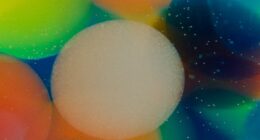Illusion is a deceptive perception of reality, while imagination is the creative ability to generate mental images or concepts.
TL;DR Illusion Vs. Imagination
Illusions can be categorized into various types such as visual illusions which play tricks on our eyes, auditory illusions which deceive our sense of hearing, and tactile illusions which manipulate our sense of touch. These illusions often rely on optical tricks or cognitive biases to create false impressions.
Imagination, however, is an inherent human capacity that enables us to think beyond what is immediately visible or tangible. It gives rise to creativity and innovation by allowing us to envision new possibilities and explore alternative realities. Imagination fuels artistic expression, scientific discoveries, storytelling, and problem-solving.
The Definition of Illusion

An illusion is a perceptual distortion, misleading interpretation, or false impression of reality. It occurs when our senses misinterpret sensory information, leading us to perceive something that doesn’t align with the actual physical world.
Illusions can take various forms, such as optical illusions that trick our vision, auditory illusions that distort sounds, or cognitive illusions that affect our judgment and beliefs.
They reveal the intricacies of human perception and cognition, highlighting how our brains can be easily misled by sensory input, prior experiences, or biases, demonstrating that reality isn’t always as it seems in our subjective interpretation of it.
The Definition of Imagination

Imagination is the mental faculty allowing humans to create, visualize, and mentally explore ideas, images, and concepts that are not present in their immediate surroundings or experienced reality.
It is a remarkable cognitive ability that enables creativity, problem-solving, and innovation. Imagination involves combining elements of knowledge, memory, and creativity to form novel mental constructs, including stories, inventions, art, and more. It plays a crucial role in human development, shaping literature, technology, and culture.
Imagination allows individuals to simulate scenarios, plan for the future, and express their unique perspectives, making it an essential component of human thought and expression.
Illusion Vs. Imagination – Key differences
| Aspect | Illusion | Imagination |
|---|---|---|
| Definition | Deceptive or misleading perception of reality | Creative mental process of forming novel ideas or mental constructs |
| Basis | Arises from misinterpreted sensory information | Originates from one's thoughts, memory, and creativity |
| Relationship to Reality | Involves misperceiving or misinterpreting the real world | Involves creating mental concepts not bound by the real world |
| Sensory Perception | Often related to sensory input and how it's processed | Not dependent on sensory input; can transcend sensory boundaries |
| Deceptiveness | Primarily characterized by being misleading or false | Not necessarily deceptive; can be based on personal interpretation |
| Cognitive Function | Often reveals limitations or biases in human perception | Demonstrates the creative and innovative capacity of the human mind |
| Examples | Optical illusions, mirages, hallucinations | Inventing fictional stories, conceptualizing new inventions |
| Role in Creativity | Typically not associated with creativity or innovation | Essential for creative thinking, problem-solving, and artistic expression |
Types of Illusions: Visual, Auditory, Tactile
Illusions can manifest in various sensory modalities. Here are some common types of illusions in each of these categories:
Visual Illusions
- Optical Illusions: These trick the eyes into perceiving something differently from reality. Examples include the Müller-Lyer illusion, where two lines of the same length appear different due to arrowheads, and the famous “impossible triangle.”
- Color Illusions: These involve the perception of colors differently from their actual properties, such as the color afterimage illusion or the checker shadow illusion.
- Motion Illusions: These create the illusion of movement or displacement, like the phi phenomenon where a sequence of still images appears as continuous motion.
- Depth Illusions: These affect our perception of the spatial arrangement of objects, like the Ponzo illusion, where two identical lines appear different due to converging lines in the background.
Auditory Illusions:
- Auditory Illusions: These involve deceptive or misleading perceptions of sounds. The Shepard tone illusion, for example, creates the impression of an endlessly ascending or descending pitch.
- Musical Illusions: Some music-related illusions, like the tritone paradox, create auditory puzzles or discrepancies in musical notes.
Tactile Illusions:
- Tactile (Touch) Illusions: These affect our sense of touch. The rubber hand illusion, for instance, involves feeling a rubber hand as if it were your own when it’s stroked in sync with your real hand.
- Thermal Illusions: The perception of temperature can be influenced, with some illusions making something feel hotter or colder than it actually is.
Image Credits
Featured Image By – 512893 from Pixabay
Image 1 By – 512893 from Pixabay
Image 2 By – Dorothe from Pixabay









